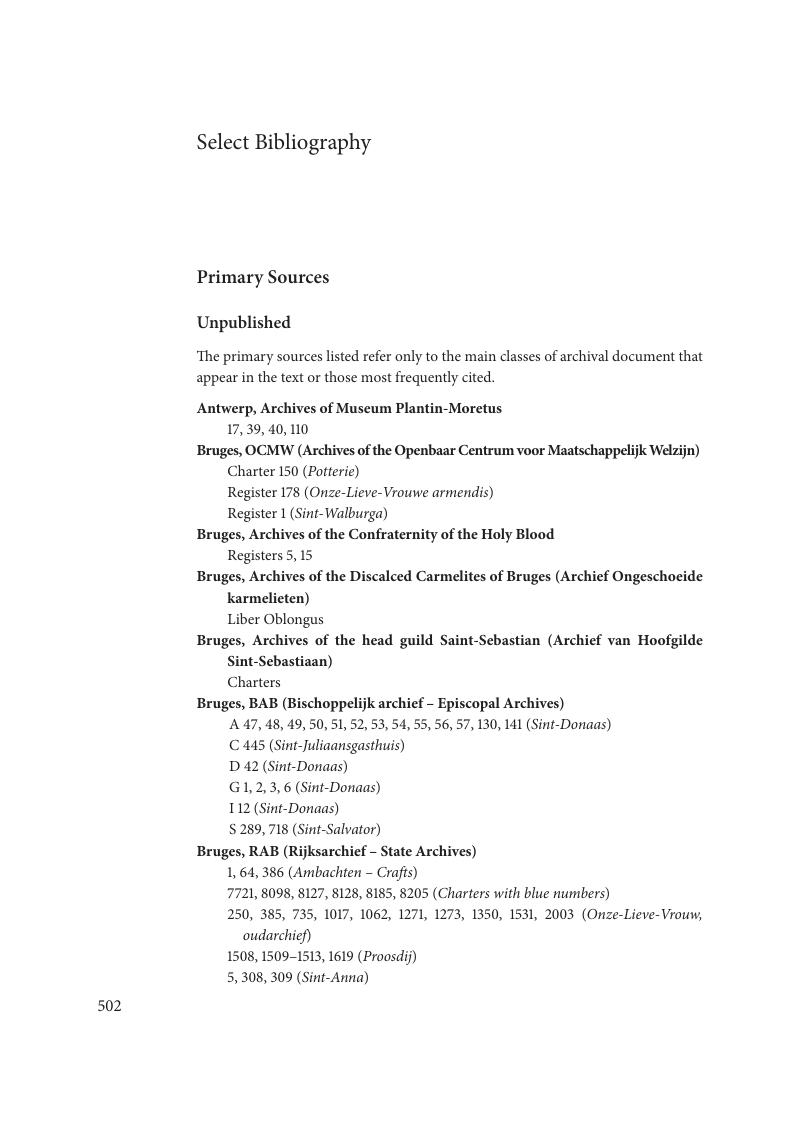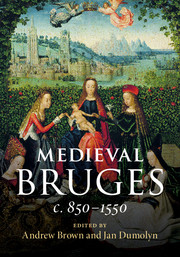Book contents
- Medieval Bruges
- Medieval Bruges, c. 850–1550
- Copyright page
- Dedication
- Contents
- Maps
- Figures
- Tables
- Contributors
- Foreword
- Acknowledgements
- Abbreviations
- Introduction
- 1 Origins and Early History
- 2 The Urban Landscape I: c.1100–c.1275
- 3 Production, Markets and Socio-economic Structures I: c.1100–c.1320
- 4 Social Groups, Political Power and Institutions I, c.1100–c.1300
- 5 The Urban Landscape II: c.1275–c.1500
- 6 Production, Markets and Socio-economic Structures II: c.1320–c.1500
- 7 Social Groups, Political Power and Institutions II, c.1300–c.1500
- 8 Religious Practices, c.1200–1500
- 9 Texts, Images and Sounds in the Urban Environment, c.1100–c.1500
- 10 Bruges in the Sixteenth Century: A ‘Return to Normalcy’
- Conclusion: Bruges within the Medieval Urban Landscape
- Select Bibliography
- Index
- References
Select Bibliography
Published online by Cambridge University Press: 25 May 2018
- Medieval Bruges
- Medieval Bruges, c. 850–1550
- Copyright page
- Dedication
- Contents
- Maps
- Figures
- Tables
- Contributors
- Foreword
- Acknowledgements
- Abbreviations
- Introduction
- 1 Origins and Early History
- 2 The Urban Landscape I: c.1100–c.1275
- 3 Production, Markets and Socio-economic Structures I: c.1100–c.1320
- 4 Social Groups, Political Power and Institutions I, c.1100–c.1300
- 5 The Urban Landscape II: c.1275–c.1500
- 6 Production, Markets and Socio-economic Structures II: c.1320–c.1500
- 7 Social Groups, Political Power and Institutions II, c.1300–c.1500
- 8 Religious Practices, c.1200–1500
- 9 Texts, Images and Sounds in the Urban Environment, c.1100–c.1500
- 10 Bruges in the Sixteenth Century: A ‘Return to Normalcy’
- Conclusion: Bruges within the Medieval Urban Landscape
- Select Bibliography
- Index
- References
Summary

Information
- Type
- Chapter
- Information
- Medieval Brugesc. 850–1550, pp. 502 - 528Publisher: Cambridge University PressPrint publication year: 2018
